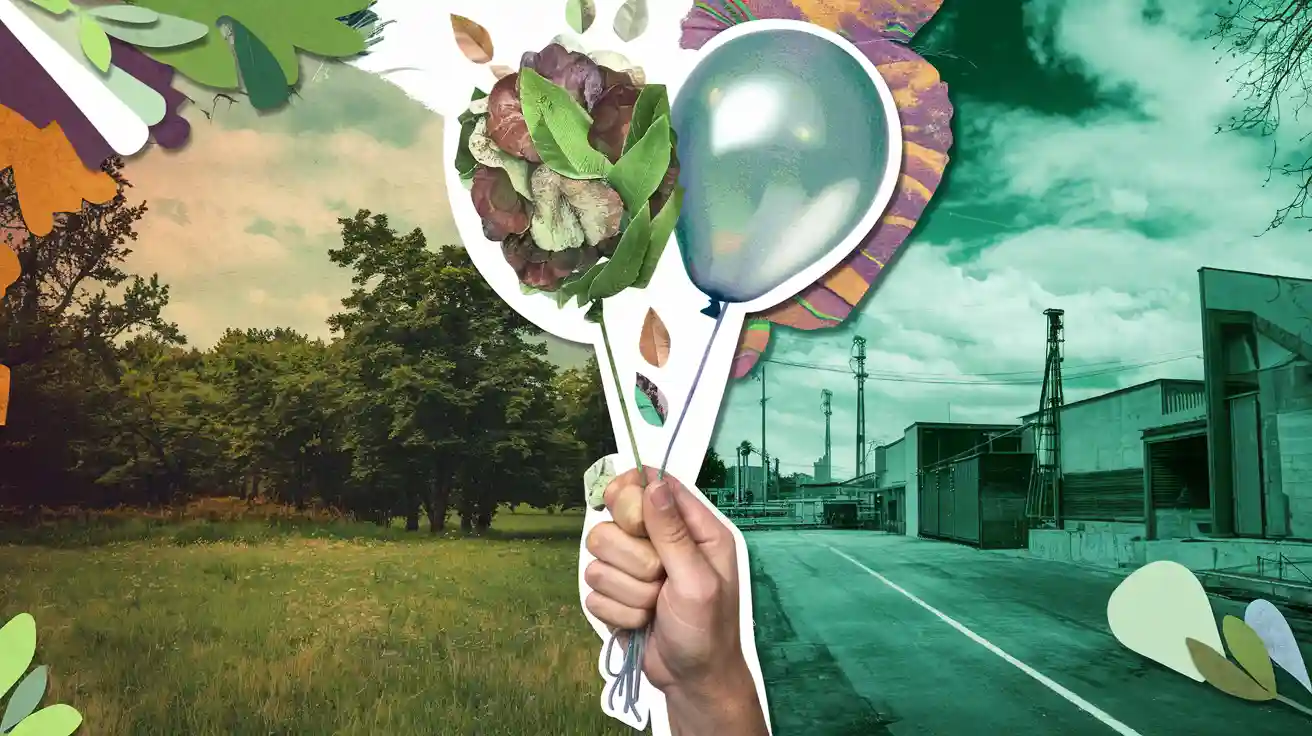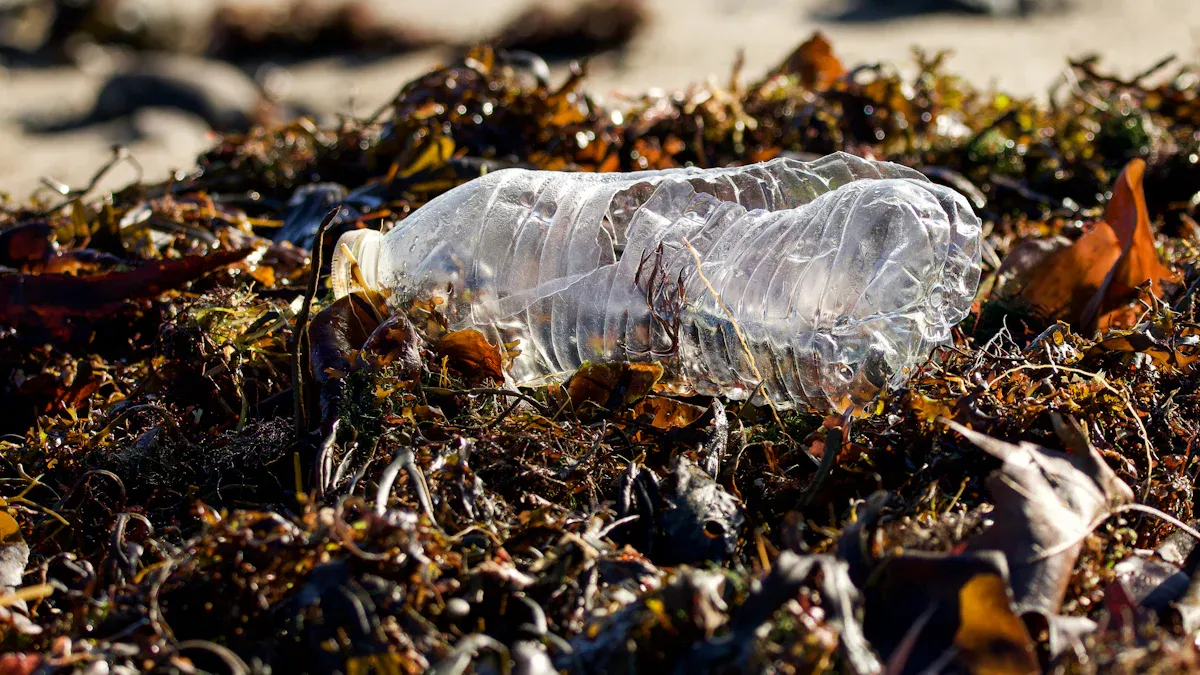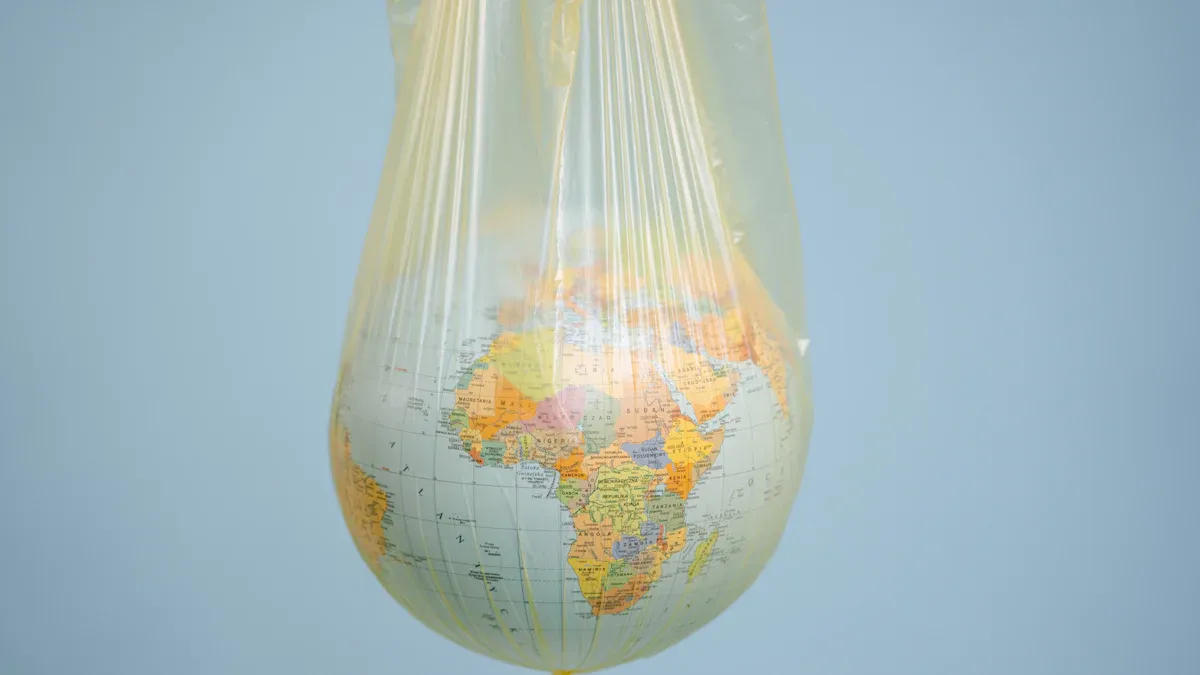
When you use balloons for parties, you might not think about how they affect nature. Regular balloons can stay in the environment for years. They cause pollution and can hurt animals. Biodegradable balloons are made from natural materials and are better for the planet. They break down naturally over time. But, they need certain conditions like sunlight and proper disposal to decompose. For example, latex balloons can break down as fast as oak leaves in the right setting. By picking biodegradable balloons and throwing them away properly, you can help the Earth and create less trash.
Key Takeaways
Pick biodegradable balloons to cut down on plastic trash. They decay quicker and are less harmful to animals.
Throw balloons away the right way. Cut off strings and don’t let them fly away to keep animals and nature safe.
Learn about balloon types. Regular balloons take a very long time to break down and can hurt the environment.
Try eco-friendly options. Use paper chains or fabric banners instead of balloons for parties.
Teach others how to get rid of balloons properly. Explain why it’s important to stop pollution and save nature.
What Are Biodegradable and Traditional Balloons?
Balloons are of two main types: biodegradable and traditional. They are made from different materials and have different effects on nature. Knowing these differences helps you pick better options for parties.
Materials Used in Biodegradable Balloons
Biodegradable balloons are made from natural latex. Latex comes from the sap of rubber trees, which grow back after harvesting. This makes latex a renewable and eco-friendly material. When exposed to sunlight and air, latex balloons can break down naturally. These balloons are often sold as a greener choice compared to traditional ones.
Materials Used in Traditional Balloons
Traditional balloons are made from synthetic materials like Mylar or plastic. Mylar balloons have a plastic base with a thin metal coating. These materials do not break down and can stay in nature for hundreds of years. Plastic balloons add to pollution and can harm animals. Animals might eat balloon pieces, which can hurt or kill them.
How Biodegradable and Traditional Balloons Are Made
Biodegradable balloons are made by collecting latex from rubber trees. Workers tap the trees to get sap, which is turned into latex. This process is more eco-friendly and causes less harm to nature. Traditional balloons, however, are made from petroleum-based materials. These materials go through chemical processes to make strong, long-lasting balloons. But their production and disposal harm the environment.
Biodegradable Balloons |
Traditional Balloons |
|
|---|---|---|
Material |
Natural latex |
Synthetic materials (Mylar, plastic) |
Decomposition Time |
Months to 15 years |
Hundreds of years |
Environmental Impact |
Less plastic waste, safer for animals |
Adds to plastic pollution, harms animals |
Manufacturing Process |
Latex from rubber trees, eco-friendly |
Petroleum-based, harmful to nature |
By learning these facts, you can choose balloons that are better for the planet.
Environmental Impact of Traditional Balloons

Traditional balloons might look harmless, but they harm nature. Made from synthetic materials, they cause pollution, hurt animals, and damage ecosystems.
Decomposition Time of Traditional Balloons
Traditional balloons, like Mylar or plastic ones, take decades to break down. Unlike biodegradable balloons, they stay in the environment for a long time. Some can last hundreds of years without decomposing. This means every balloon thrown away adds to plastic waste.
Even biodegradable balloons, like latex ones, can take years to break down in water or oceans. While they are called eco-friendly, they still cause harm if not disposed of properly. Picking balloons that break down faster or skipping balloons can help the planet.
Pollution and Plastic Waste from Traditional Balloons
Traditional balloons add to pollution. When released, they travel far before landing in nature. They often end up in oceans, rivers, or forests, adding to plastic waste. For example, over 100 balloons were found during a clean-up at Edwin B. Forsythe National Wildlife Refuge.
Materials like Mylar and plastic don’t break down naturally. Instead, they turn into tiny pieces called microplastics. These microplastics pollute soil and water and can enter the food chain. This harms animals and people. Using fewer traditional balloons helps reduce pollution.
Risks to Wildlife and Ecosystems
Traditional balloons are dangerous for animals. Animals often eat balloon pieces, thinking they are food. Birds, turtles, and sea animals are most at risk. Eating balloons can block their stomachs, causing them to starve or die. Even latex balloons have been found in marine animals’ stomachs, showing they aren’t harmless.
Balloon strings are also harmful. Animals can get tangled in them, leading to injuries or death. This can upset ecosystems by hurting important species. For example, when turtles or birds are harmed, it affects the food chain. Choosing eco-friendly options or avoiding balloons can protect wildlife.
Tip: If you use balloons, throw them away properly. Don’t release them into the air, and always cut the strings before trashing them.
Environmental Impact of Biodegradable Balloons

Biodegradable balloons are thought to be better for nature than traditional ones. They are made from natural latex, which can break down in the right conditions. But their impact on the environment depends on how they are used and thrown away.
How Biodegradable Balloons Break Down Naturally
Biodegradable balloons break down when exposed to sunlight and moisture. Bacteria and fungi help decompose the latex into water, carbon dioxide, methane, and biomass. This process is similar to composting, where organic materials turn into simpler substances.
The time it takes for them to decompose varies. In good conditions, they may break down in months or a few years. In places like landfills or oceans, they can take up to 15 years. This is still much faster than traditional balloons, which last hundreds of years. To help them decompose, throw them away in places with sunlight and moisture.
Positive Impacts of Biodegradable Balloons
Biodegradable balloons have some benefits for the planet. They create less plastic waste compared to traditional balloons. They also break down faster and don’t leave harmful microplastics behind. This makes them safer for the environment.
Another benefit is that they are less harmful to animals. Since they decompose quickly, animals are less likely to eat or get tangled in them. While no balloon is completely safe, biodegradable ones are a better choice for protecting wildlife.
Lastly, biodegradable balloons are made from renewable materials. Latex comes from rubber tree sap, which can be collected without cutting down the tree. This makes their production more sustainable than synthetic balloons.
Limitations of Biodegradable Balloons
Even with their benefits, biodegradable balloons are not perfect. They need sunlight, moisture, and microorganisms to break down. In places like landfills or deep oceans, these conditions are often missing, slowing the process.
Another problem is that people might think they are harmless and litter them. This can still hurt animals and pollute the environment. Proper disposal is very important to reduce harm.
It’s also hard to measure their full environmental impact. Making, transporting, and throwing them away all affect the environment. Studying these effects takes time and may miss local issues.
Limitation Type |
Description |
|---|---|
Decomposition Conditions |
Needs sunlight, moisture, and microorganisms to break down well. |
Misconceptions |
Careless disposal can still harm animals and nature. |
Lifecycle Analysis Challenges |
Hard to measure all environmental effects of production and disposal. |
Regional Variations |
Local conditions can change how fast they decompose and their overall impact. |
Biodegradable balloons are a better choice, but not perfect. You can help the planet more by using fewer balloons or finding other eco-friendly ways to celebrate.
Key Things to Think About When Picking Balloons
How to Dispose of Biodegradable Balloons Properly
Throwing away biodegradable balloons the right way helps nature. These balloons break down naturally but need sunlight and moisture. If thrown away wrong, they take longer to decompose and can hurt animals. Here’s how you can help:
Recycle balloon pieces if possible.
Compost latex balloons to help them break down faster.
Don’t let balloons float away; they can harm animals.
Teach others why proper disposal is important.
By doing these things, you can cut down waste and make your parties greener.
Misunderstandings About Biodegradable Balloons
Some people think biodegradable balloons are totally safe. This idea often leads to careless littering, which still harms animals and nature. Remember, biodegradable doesn’t mean they disappear right away. They need time to break down, especially in places like landfills or water.
Using reusable decorations or paper items instead of balloons can lower waste. Learning and sharing facts about balloon dangers and limits can help everyone make better choices.
How Biodegradable Balloons Work in Real Life
Biodegradable balloons are better for the planet than regular ones. They create less plastic waste and are safer for animals. But how well they work depends on how they’re used and thrown away. For instance, balloons in landfills or oceans take years to break down.
To help the Earth, try using fewer balloons. Pick eco-friendly options like cloth banners or flowers. These choices protect nature and make your parties special. Even small changes can reduce pollution and save wildlife.
Biodegradable balloons are better for nature than regular balloons. They break down faster, cause less pollution, and are safer for animals. But they still need to be thrown away properly to help the planet. Using fewer balloons or choosing reusable decorations like paper garlands can make a big difference.
More people are now buying biodegradable latex balloons to help the Earth. Companies are also working on making these balloons cheaper and better. The table below shows important trends about biodegradable balloons:
Evidence Type |
Description |
|---|---|
Market Demand |
More people want biodegradable balloons as a greener option. |
Environmental Impact |
Biodegradable latex balloons break down faster, causing less harm. |
Innovation Opportunities |
Companies are improving these balloons to make them work better and cost less. |
By picking eco-friendly options and throwing balloons away the right way, you can cut waste and help nature.
FAQ
How are biodegradable balloons different from regular balloons?
Biodegradable balloons use natural materials like latex that break down. Regular balloons, made from plastics like Mylar, take centuries to decompose. They also pollute and harm animals.
Can biodegradable balloons still hurt animals?
Biodegradable balloons are less harmful since they break down faster. But if thrown away carelessly, they can still hurt animals. Always cut strings and dispose of them properly to keep nature safe.
How long do biodegradable balloons take to decompose?
Biodegradable balloons can break down in months to a few years. They need sunlight and moisture to decompose quickly. In landfills or oceans, it takes much longer.
What are some eco-friendly party decoration ideas?
You can use paper garlands, cloth banners, or flowers instead of balloons. These options create less waste and are better for the planet.
Do biodegradable balloons still harm the environment?
Biodegradable balloons are less harmful than regular ones. But if not disposed of properly, they can still pollute and hurt animals. Composting or proper disposal helps reduce their impact.








